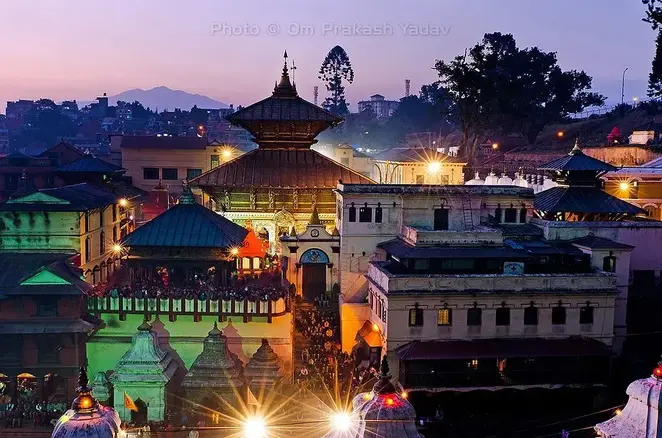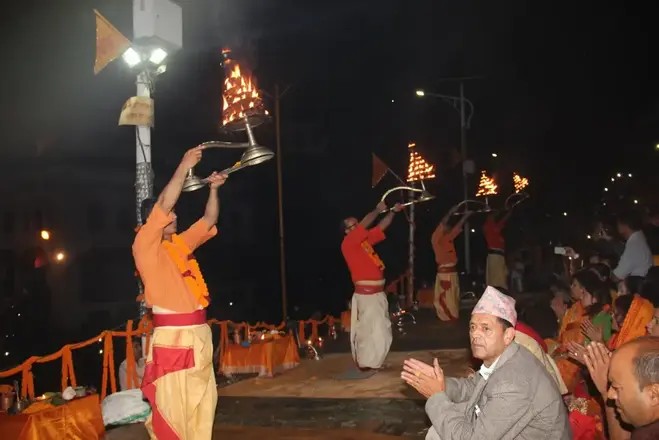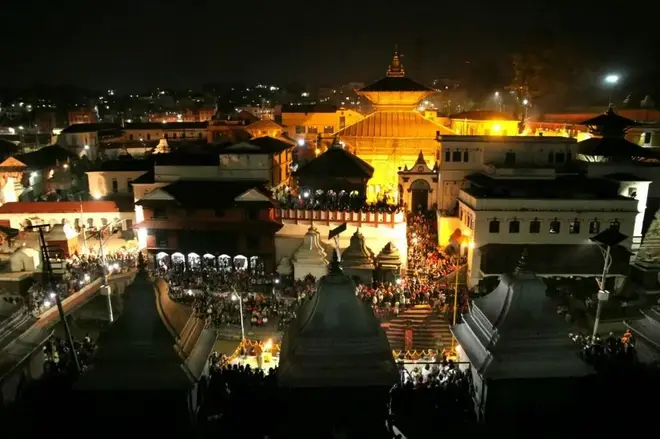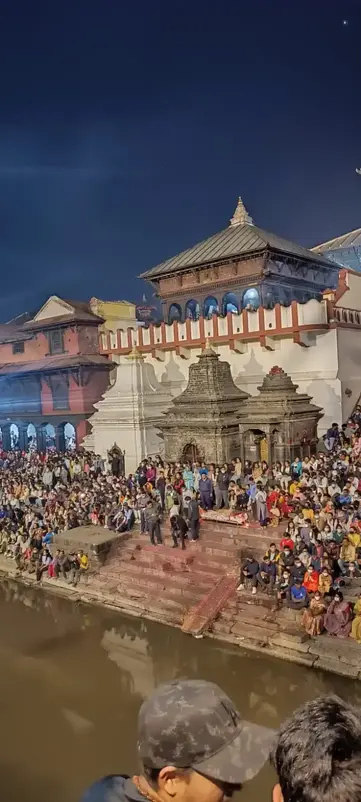




Evening Aarati Tour at Pashupatinath Temple
Tour description
There is a buzz around the place as devotees from all walks of life gather on the banks of the Bagmati.
As We reach the banks of the river opposite to the temple, the Bhatta (priest) is preparing for the Aarati. On the other side of the river, another priest is placing wood and getting ready for a cremation to take place. we are not the only one who are here to witness this, there are people young and old, local and foreign.
Everyone who is present here wants to indulge in the spiritual journey. One that they will remember for years to come.
There is something pacifying about Pashupatinath. Standing on the banks of the holy Bagmati, the temple is one of the most important Hindu shrines in the world. Devotees from all across the globe come visit the temple which has also been declared a UNESCO World Heritage Site. Built around the 5th century, this holy pilgrimage is said to have existed from the beginning of the millennium when a Shiva lingam was discovered here.
Tourists (non-Hindus) are forbidden from the temple itself; however, they can visit the exteriors, the ghats, river and most importantly the aarati area opposite to the Pashupatinath Temple.
This evening aarati is an event worth watching. Three priests line up on the bank of Bagmati from where they can get a direct view of Pashupatinath Temple. Aarati is a ritual of worship in which light from wicks soaked in ghee (purified butter) is offered to God. The Pashupatinath aarati follows three priests conducting the custom with oil lamps, lanterns and other religious elements by chanting sacred mantras.
The aarati starts with worship with coal incense that is burned with vegetable oil and different kinds of wood. As that is happening, a group of devotees start lighting up three large structures with fifty-four diyos (small oil-lamp) which is raised to Lord Shiva. The priests first dip the lights four times on the bottom; circle it seven times on the top in perfectly coordinated motions.
What will we see on this tour?







